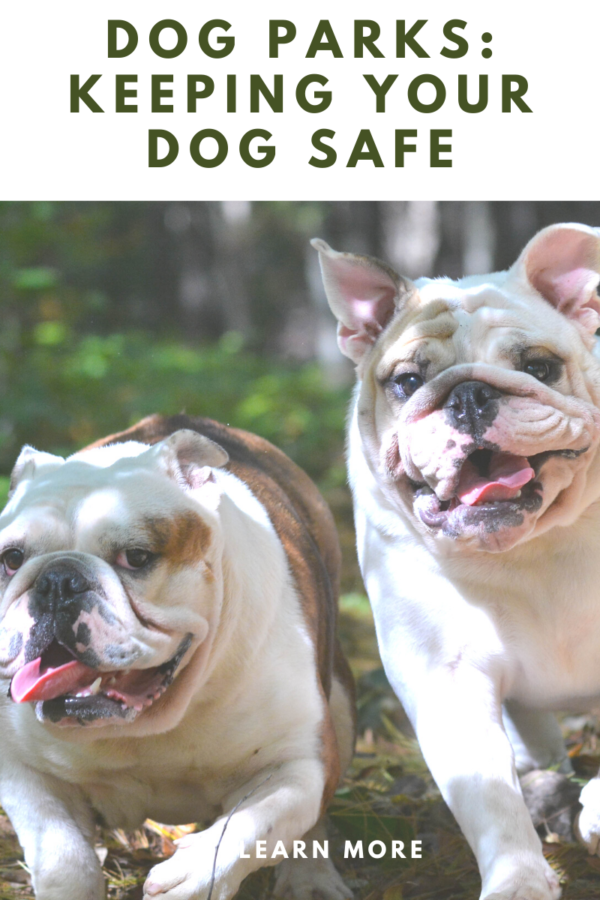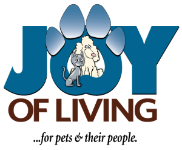Dog Parks: How To Keep Your Dog Safe
Posted on May 17, 2021 by Joy of Living No comments

With warmer weather on the horizon, dogs are more excited than ever about being outside. For many dog guardians, dog parks provide an outlet for dog energy and can provide socialization. Dog parks aren’t the best option for all dogs, though. Before heading out to the park, do an evaluation of your dog.
Disclosure: This post contains affiliate links. We receive a small commission on goods purchased via these links, at no additional cost to you.
Are Dog Parks A Good Choice for my Dog?
Does your dog prefer human company over other dogs, or prefer to interact with a few select dogs? If so, pursue a different activity.
Is your dog a senior or under the age of one year? Many older dogs don’t tolerate the energy and playfulness of younger dogs. Younger dogs, especially males, are often attacked by older adult dogs exhibiting a high degree of aggressiveness.
Have you recently adopted a dog? If ao, take a few months to learn his behaviour well before heading to the dog park. Watch for signs of stress, and learn his usual play behaviours. Ensure your dog has good recall, and will come to you when called.
Research Before Heading to the Park
Once you’ve determined your dog is dog park ready, make a list of the parks closest to you. There are some factors to determine before selecting a park to ensure you and your dog will be safe.
Factors to Consider
Determine the Busiest Times/Days of the Week
Avoid heading to the dog park at the busiest times. Group dynamics at the park can change quickly, so it’s important that all dogs have plenty of space. This helps prevent potential fights between dogs.
Check out conditions at the park.
-
- Do people pick up after their dogs? If not, this may indicate lack of supervision of their dog.
- Are groups of people standing around talking to each other or on their cell phones? This may signal lack of attention of their dog’s behaviour, and delays in curbing their dog’s unwanted behaviour.
- Observe dogs already at the park before you enter. Observe dogs that appear stressed, with tails between their legs and heads down? This often signals stress in dogs, and a stressed dog is often more likely to react badly with approached by another dog.
- Watch for dogs that chase, follow or hump other dogs after being called by their owner
When You Arrive At The Dog Park
Use Caution When Entering Dog Park
According to an article in the May 2021 issue of Whole Dog Journal, most conflicts in dog parks happen wutgub 100 feet of the entrance, most of them occurring within 20 of entrance! Factors that contribute to this are dog owners chatting with each other when they arrive, or having seating too close to the entrance. Check out the park configuration.
Look for an alternative way to enter. If there’s only one entrance, wait for congestion to clear out before entering. Once inside the park, move away from the entrance as quickly as possible. Stay focused on your dog’s behaviour until you’re at least 100 feet away from the dog park entrance.
Keep Moving
Once you’re away from the entrance, keep walking. Don’t stop and wait for your dog to start interacting with others. Conflicts between dogs tend to happen when all are still rather than when moving. Parks set up as more of a dog run, are better for small groups of dogs that are friends, or for a short visit when the park is empty.
Above all, it is very important to supervise your dog at all times while at the dog park. Although you’re familiar with your dog and his/her behaviour, there’s no way to know what other dogs there might do in different situations.
Conclusion
Be on the lookout for signs of stress in your dog. Have your leash (NOT an extendable leash, but a nylon one no longer than 6 ft.) with you, and if your dog quits responding to your cues, put on the leash and leave the play are for a while. Watch for signs of aggressive play in other dogs. See signs of aggressive behaviour? Interrupt the play, remove the dog being chased, is smaller or less assertive. Wait a few minutes, then give that dog time to decide whether he wants to return to play with the other dog.
The dog park is great fun for some dogs, but not others. Follow the steps listed above to minimise chances of your dog being injured. If the dog park isn’t a good fit for your dog, check out our article on alternatives here
